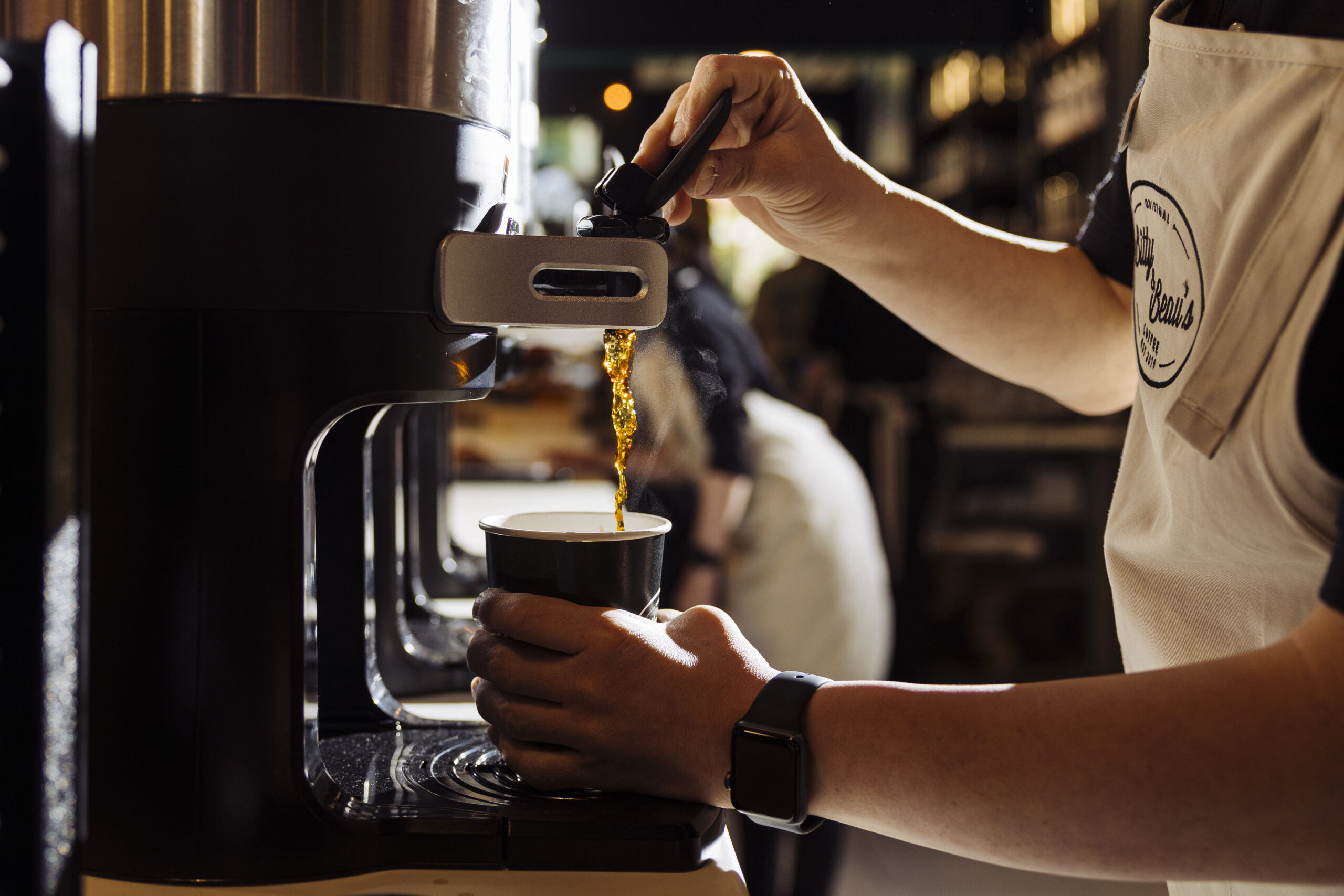
By: Lillie Wright
Tourism has exploded in recent years. What was once reserved for famous monuments and historical sights has grown to include everything from fashion to food. The coffee industry is tapping into die-hard fans and creating an industry known as Coffee Tourism. Farms offer tours and educate about the coffee growing process, roasteries offer tastings of different blends, and major chains provide behind-the-scenes access. The world of coffee is a unique, multi-faceted hub that combines the work of many highly-skilled people to create one perfect cup.
Types of Coffee Tourism
Everyone loves knowing where their food comes from, and a coffee farm tour is a perfect way to understand what it takes. Guests walk the rows of coffee trees, watch the maturation process of the coffee fruit, and see how the beans are harvested. Many of these farms are in picturesque locations like Hawaii, Guatemala, or Costa Rica, so guests can experience the breathtaking views while enjoying fresh, local coffee. The employees at these farms are passionate about what they do and want to impart their knowledge to guests, helping them understand all the work that goes into making coffee. As organically-grown food becomes more important to society, many farms take up the torch and grow their coffee according to these practices. Farms love to point out how their product adheres to these standards and strives to become more environmentally friendly. Some tours even allow guests to assist in the planting and harvesting process of the coffee plants, making the experience more personal.
Different roasts and blends of coffee create different flavors, but most people need help deciphering them. Roasteries now offer tastings where guests can sip different coffee roasts and learn to identify hidden flavors. The classes are led by a Master Roaster who walks guests through each sip and educates them about how climate, processing, and brewing style, among other factors, drastically affect the outcome of the coffee. Rather than sipping lattes or Americanos, guests drink the coffee black, allowing them to savor its true essence. Since most people cannot stomach three to five full-size coffees in one sitting, the tastings consist of smaller cups meant for sipping.
Some places offer food pairings along with their coffee to enhance the experience and deepen guests’ appreciation for the coffee. Master Roasters, also called Q Graders, participate in a “Cupping” process where coffee is smelled, sipped, and graded based on how well it was grown, processed, and brewed. Multiple institutions train Q Graders to perform this vital task, and many national and international coffee brands employ these trained tasters. Anyone can practice cupping and become a Q Grader, but it’s also fun to enjoy sipping coffee and learning with friends.
The ultimate experience for any die-hard coffee fan is behind-the-scenes access to their favorite coffee house. Facility tours have exploded in recent years, with many major brands utilizing them to engage with their fanbase and educate people about what it takes to produce their favorite products. Starbucks offers tours in its original Seattle location–now branded as Starbucks Reserve–that tell the company’s story, its origins, and how it grew into the household name it is today. Other cities, like Ashville, NC, offer historical tours of the city that involve visiting its many artisanal coffee shops. Even if coffee is not at the center of the tour, it always enhances the experience. Guests feel they are receiving coveted information–they know the secrets behind the curtain.
Best Coffee Tourism Destinations
Coffee Tourism has spread to many different corners of the world, but some places are hotspots. Hawaii is known for its Kona tours and experiences that leave guests raving. Drinking freshly brewed coffee picked from the farm you just walked through while taking in the stunning island views? Yes, please. They offer complimentary farm tours and upgrade to roasting and brewing tours. Guests can experience the entire process from plant to pour and gain a deep understanding of the work that goes into creating a quality product. The LeCanto farm in Costa Rica offers unique perks to its tour program. They are certified organic, so they offer guests a glimpse into the methods they use to grow their coffee and other crops under these restrictions. Their efforts support not only the environment and continued production of coffee but also the employees. Many are working-class citizens who rely on the farm to make ends meet and appreciate tourists’ interest in what they do. They are the real backbone of the coffee industry, and their work deserves to be showcased.
Italian coffee is often stronger and darker than American coffee, and American tourists love to taste and compare the two. Coffee drinking culture is also very different in Italy than in America. Whereas in America, customers drink a large cup of coffee often at work or on the go, Italians prefer to sit and drink their coffee slowly, savoring the flavor and ritual of coffee. They have coffee “bars” where guests stand and drink their tiny espressos served in shot glass-sized cups. They may be small, but these drinks pack a punch and keep drinkers going for the rest of the day. One Italian espresso often has as much caffeine as one standard American coffee.
Coffee is a universal language that transcends barriers and connects people in a way few other things can. When traveling to a new city or country, take some time to explore the local coffee scene, meet the locals, and learn about their practices. You may find a new drink or technique to incorporate into your daily practice.
